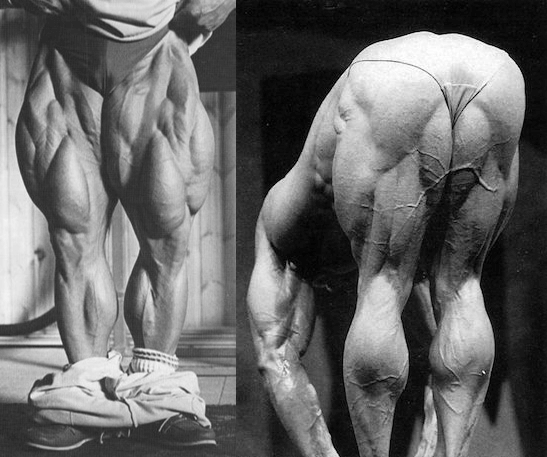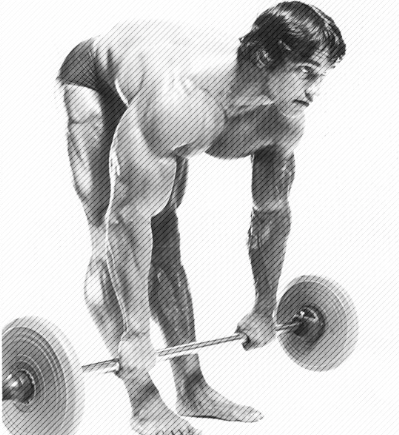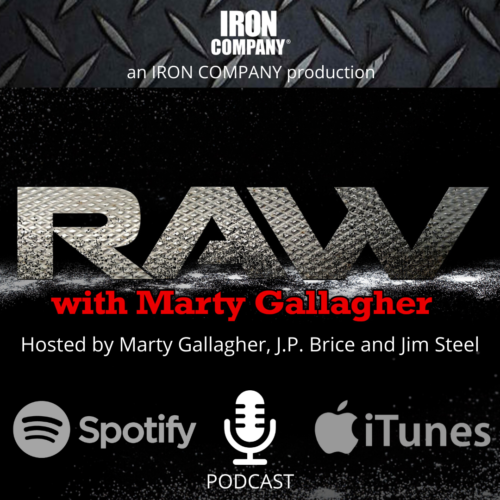
Hamstring Exercise Remedial
So few hamstring exercise choices – and those few done wrong!
The hamstrings are critically important muscles. There is no speed without powerful leg biceps. There is no great leaping or bounding without steel cable hamstring muscles. Strong hamstrings are needed to counterbalance powerful thigh muscles, otherwise muscle imbalances are created. Over time, without proper hamstring exercise, imbalances are ingrained and inevitably lead to pulls, tears or rips.
Injury is preordained when a far weaker muscle is continually forced to “keep up” with a stronger muscle on the other side of a limb. Optimally, for every progressive resistance set of thigh work, the athlete performs a complimentary set of hamstring exercise. Balanced training creates symmetrical physical development. Neglecting the hard-to-train hamstrings is an understandable mistake, given the paucity of exercise choices.
Underdeveloped hamstrings are epidemic. The hamstrings are perhaps the most difficult muscle to effectively isolate. Compound isolative difficulties with a decided lack of hamstring exercise variety. This lack of choice contributes mightily to hamstring neglect. For 99% of the general training populace, hamstring training is limited to one exercise: the lying leg curl.
If you train at a fancy facility you might have access to the seated leg curl, the same exercise done sitting upright. No other muscle or muscle group has fewer exercises to choose from. For the lying leg curl to do as intended, isolate, build and strengthen the hamstrings, from knee to glutes, exacting technique is required.
Done right, the lying leg curl can skillfully activate and isolate both the lower and the hard to isolate upper hamstrings. David Weck, sprint expert, points out that when it comes to improving sprint speed, the upper insertion point of the hamstring, where the long fibers of the hams tie into the glutes, is far more important than the lower insertion point. The stronger the upper hamstrings are, the greater the sprinters rate of “turnover,” how fast the legs can be alternated.
The sprinters’ rate of turnover is a huge factor in determining all-out top speed (I paraphrase David.) The goal is to strengthen the hamstrings from bottom to top and all points in between. The leg curl needs to be executed with total concentration and precision. The upper-ham insertion point is nearly impossible to isolate. There is a technique for doing so that requires complete attention and effort.
The wrong way to do a lying leg curl - Hamstring Exercise: most trainees do the lying leg curl incorrectly. The function of the hamstrings is identical to that of the biceps. Just as there are proper ways to do the various types of curling, there are also proper ways to do leg curls. The easiest way to leg curl is to jolt pad upward with the back of the leg to start the concentric phase of the rep. A jolt makes the start easier; it creates momentum that carries the payload to the sticking point. At the sticking point, the leg curler allows the hips to rise as the rep gets tough.
Letting the hips raise up improves leverage. Letting the hips come up makes it possible to slide through the sticking point. Don’t avoid or slide through sticking points, find and embrace the sticking point. Struggling through sticking points is where the muscle and strength gains reside. No one pulls their jolted, hip-raise leg extensions to a full completion. A shortened rep stroke makes the lying leg curl easier yet.
At the top of the first rep, the leg curler allows the weight to freefall, no negative resistance whatsoever. The leg curler catches the rebound and synchronizes his next jolt to make the start of the subsequent reps even easier. All these little technical tricks make leg curls easier. Easier in progressive resistance training will not trigger hypertrophy. Easier reps, partial reps, deliver subpar results.
Leg curl perfection - Hamstring Exercise: our strategy is to make lying leg curls more difficult. This is not too hard to figure out. Do the opposite of all your intuitive instincts. Instead of jolting or jerking to get the leg curl poundage moving, slash the poundage and use a purposefully slowed start. This is incredibly difficult and causes the lower hamstrings to engage instantly and fully. Next: avoid the natural inclination to let the hips rise. Instead of letting them rise as the rep gets tough, drive the hips into the bench.
The slowed start and hip drive exponentially increase the degree of difficulty. The hip drive taxes the mid-hamstrings. The concentric phase uses a full range-of-motion, each rep is pulled towards the glutes as far as possible. The final phase of each lying leg curl rep is to lift the knees off the bench to finish each rep. Lifting the knees at the edge of ROM forces the upper ham insertions to engage. There is no way the knees can be successfully lifted from the pad without forcing intense flexion the hamstrings at the upper insertion point.
On the lowering, the eccentric, the leg curl poundage is resisted during every inch of the descent. Instead of allowing the weight to free-fall, with zero benefit for the hams, the weight is resisted, creating a weighted negative. Don’t lower ridiculously slow, barely slowed is slow enough.
Dead-stop at the bottom of the negative before beginning the next no-jolt rep. Rep with this degree of feel and precision until failure, until you cannot do another rep. There is no danger in failing with a leg curl rep, so take it to the limit and beyond. Feel free to use the drop-set strategy: perform a set of leg curls with perfection until hitting positive failure. Without getting up, drop the pin 3-5 plates and do another set. Advanced trainees will do three drop sets.

Other worthy hamstring exercises: humans can easily attack the biceps because we have hands. If the feet could grasp a barbell or a pair of dumbbells like hands, it would be far easier to work the thigh biceps. There are a whole series of barbell/dumbbell exercises that attack the hamstrings; these exercises can be highly problematic if done incorrectly. It takes extreme precision to hold a pair of dumbbells or a barbell in your hands and somehow isolate the hamstrings.
In almost every case, the technique will involve lower forward, usually using a purposefully arched spinal column, complete with flexed back muscles. From the standing position, the barbell or dumbbells are held in the hands at crotch height. The trainee now leans forward in a proscribed manner. The hamstrings engage and resist the eccentric lowering. This negative tension is maintained until the turnaround. On the concentric portion of the rep, the hamstrings and the hamstrings alone power the raising.
Again, the body, left to its own devices, will seek ways to make the task easier. It will recruit the spinal erectors, a much more powerful set of muscles, to “help” – which is exactly what we don’t want. It takes total concentration to use free weights and attain and then maintain the total concentration needed to isolate the hamstrings.
Free weight will dig a far deeper and more dramatic muscular inroad than lying leg curls. This due to the far heavier payloads and extended range-of-motion obtainable with free weight and unobtainable when limited to lying leg curls. Types of free weight hamstring exercises include, but are not limited to…
- Stiff-leg deadlift (barbell maintains contact with the shins and thighs)
- Stiff-leg deadlift (barbell allowed to travel forward and away from body)
- Stiff-leg deadlift of a box or weight plate
- Stiff leg deadlift off the floor or box using dumbbells
- Romanian deadlift (glutes are thrust rearward)
- Good morning (light barbell behind the neck: engage the hams, not erectors)
Revisit your approach to hamstring exercise. Revisit how you perform lying leg curls. There is more to the world of hamstring exercise than just lying leg curls. Emphasize technique and feel over poundage. Make the critical mind-muscle connection. Done right, the lifter feels the hamstrings engaged on both the negative and concentric of every rep. If you are not feeling it in the hams, the stronger erectors have taken over.
Success in training the hamstrings is dependent on focus and iron-willed concentration during the set. The instant you space out, the stronger muscular neighbor jumps in to help the weak hams – which is exactly what we don’t want. Call it a form of Iron Mindfulness. The good news is weak hamstrings, undertrained and wrongly trained, come up quick when suddenly subjected to “the right stuff.”
About the Author
As an athlete Marty Gallagher is a national and world champion in Olympic lifting and powerlifting. He was a world champion team coach in 1991 and coached Black's Gym to five national team titles. He's also coached some of the strongest men on the planet including Kirk Karwoski when he completed his world record 1,003 lb. squat. Today he teaches the US Secret Service and Tier 1 Spec Ops on how to maximize their strength in minimal time. As a writer since 1978 he’s written for Powerlifting USA, Milo, Flex Magazine, Muscle & Fitness, Prime Fitness, Washington Post, Dragon Door and now IRON COMPANY. He’s also the author of multiple books including Purposeful Primitive, Strong Medicine, Ed Coan’s book “Coan, The Man, the Myth, the Method" and numerous others. Read the Marty Gallagher biography here.


